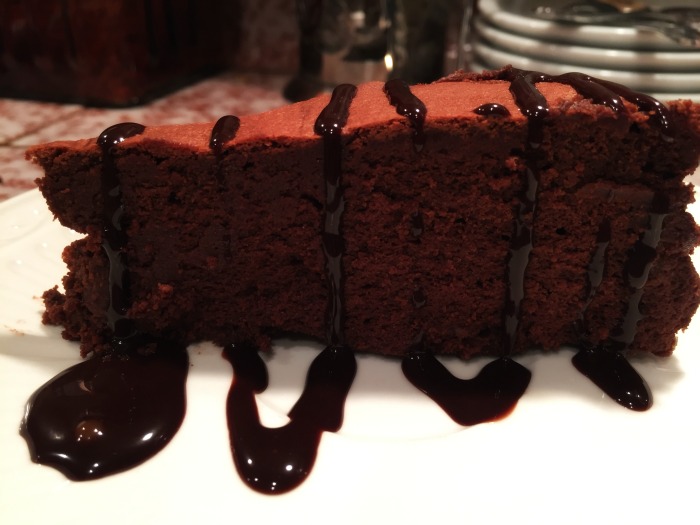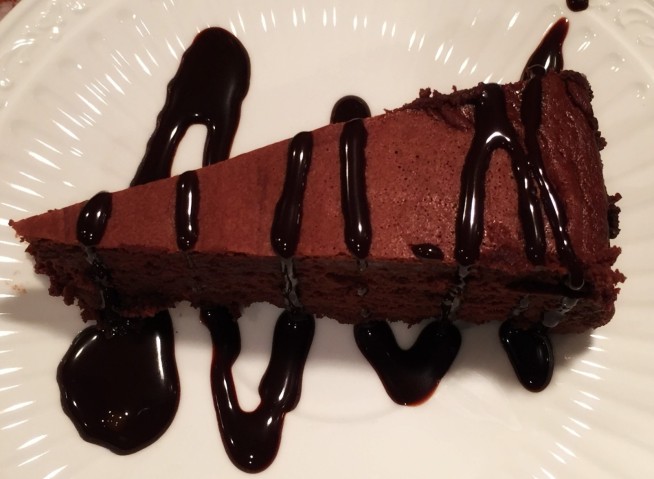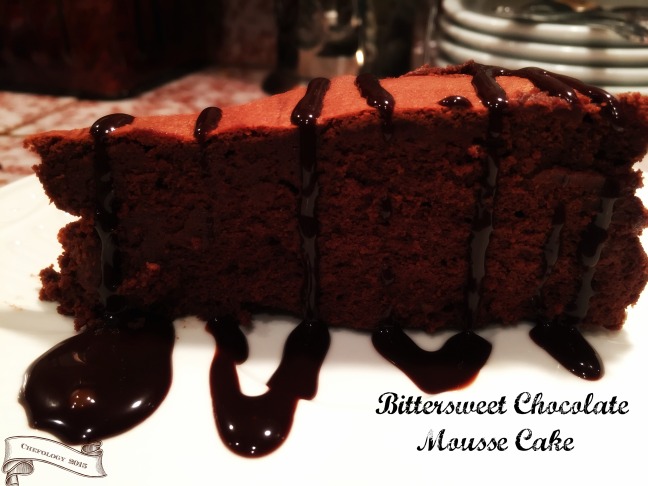The focus of this week’s lesson – “How does beating transform a few tablespoons of liquid into several cups of foam?”
(The Science of Good Cooking pg. 198)
Egg whites are 90% water. When we whip them the proteins unfold, trap air and bond together into networks. As we continue to beat them they trap more and more air into tiny bubbles that fluff up and become thick foam.
As this foam sits, it will begin to deflate. In this chapter our lesson explains how to delay this deflation in whipped egg whites with stabilizers.
Stabilizers
Sugar added at the right moment is a great stabilizer. Sugar needs the water in the egg whites to dissolve, but the egg white molecules also need to unfold to trap air bubbles. If you add sugar too early your egg whites will be less voluminous. If added too late they will be gritty and form drops of sugar syrup when baking. The best time to add sugar is when the foam has reached the soft peak stage, still frothy but not firm. This is when you will get the most stable voluminous meringue. Meringue cookies and our recipe for this week Bittersweet Chocolate Mousse Cake are examples of using sugar as a stabilizer.
Cream of Tarter actually creates a more stable foam, though it takes longer to form. Its work is done through chemistry. As an acid it changes the electrical charge on the egg protein of egg whites reducing the interactions in protein molecules. Angel Food Cake and Lemon Meringue Pie are examples of recipes that use cream of tarter as a stabilizer.
The Test Kitchen used cream of tarter to stabilize egg white foam in the experiment for this chapter. They tested 8 batches of whipped egg whites, using 4 egg whites in each batch. In 4 of the batches they added a 1/4 teaspoon of cream of tarter. The remaining 4 batches they added no stabilizer at all.
The result was equally fluffy whipped whites, but after transferring each test batch to a funnel set over a beaker and left to rest for 60 minutes they could see a difference. The egg foams with cream of tarter lost less moisture over the 60 minutes. The beakers captured 23 mL of liquid from the unstabilized whites, whereas the stabilized whites only lost approximately 10 mL of liquid.
The addition of cream of tarter helps the molecules create a stronger network to trap and hold the air bubbles in the foam longer. This transfers to stronger meringue and less weeping in baked goods like Lemon Meringue Pie.
The following recipe uses sugar as the stabilizer. It produces a wonderful melt in your mouth chocolate cake that is light, but decadent.
Cooking the Concept
Bittersweet Chocolate Mousse Cake
Ingredients:
- 12 tablespoons unsalted butter, cut into 12 pieces
- 12 ounces bittersweet chocolate, chopped
- 1 ounce unsweetened chocolate, chopped
- 8 large eggs, separated
- 1 tablespoon vanilla
- 1/8 teaspoon salt
- 2/3 cup packed light brown sugar
Preparation:
- Adjust oven rack to lower-middle position and heat to 325F. Grease 9 inch springform pan, line the bottom with parchment paper, grease and flour the pan including the parchment paper.
- Wrap bottom and sides of pan with large sheet of aluminum foil. ( Or see Note in step 8 below.)
- Melt butter and chocolate in large heat proof bowl set over saucepan filled with 2 quarts of barely simmering water, stirring occasionally until smooth. (Optional – I prefer using the microwave. Add the chocolate and butter to a pyrex bowl cook on high power for 1 minute, stir. Cook for 1 more minute and stir until chocolate is melted and smooth. If using this option you will need to bring a separate pan of water to a boil to use later for the water bath.)
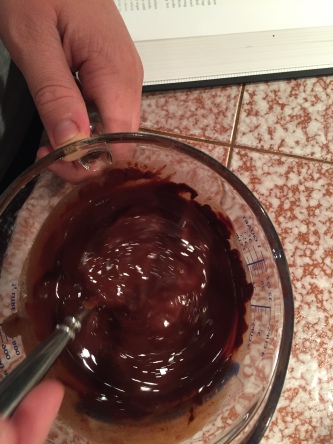
- Whisk egg yolks and vanilla into chocolate mixture. Set aside. Reserve the pan of water for the water bath.
- Using stand mixer fitted with whisk, whip egg whites and salt on medium speed until frothy, about 30 seconds.
- Add 1/3 cup of sugar, increase speed to high and whip until combined 30 seconds. Add remaining 1/3 cup of sugar and continue to whip until soft peaks form when whisk is lifted, about 2 minutes longer (we were pretty stiff at 90 seconds, so check early).
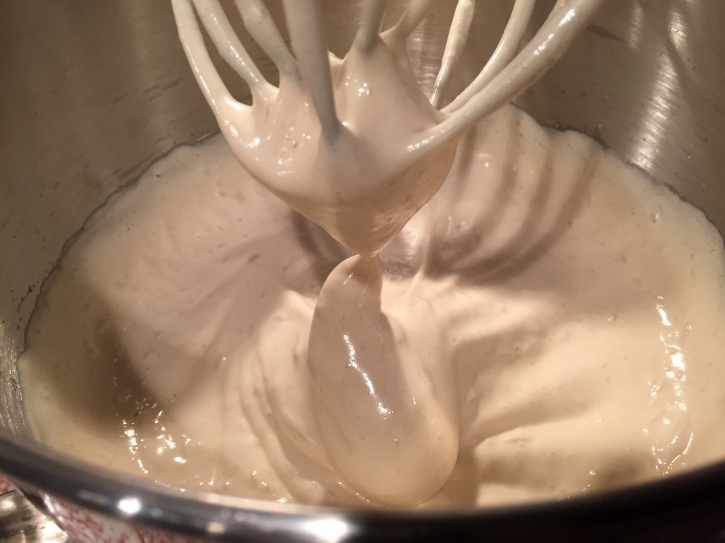
Soft Peaks. Thick and somewhat stiff. - Using a whisk, stir about one-third of the beaten egg whites into the chocolate mixture to lighten it. Then fold in remaining egg whites in 2 additions using whisk.

- Gently scrape batter into prepared springform pan, set pan in large roasting pan, then pour reserved hot water from saucepan into the roasting pan to a depth of 1 inch. Carefully slide roasting pan into oven and bake until cake has risen, is firm around edges, center has just set, and center registers 170 degrees, 45 – 55 minutes. (Note: As you can see below in the picture we used the Test Kitchen’s method of the springform pan set into a larger pan set in the water bath instead of wrapping the pan with foil. It worked very well.)
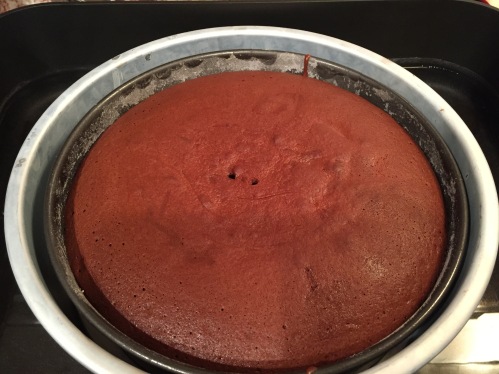
- Remove springform pan from water bath, discard foil, and let cool on the wire rack until barely warm, about 3 hours. Then wrap in plastic wrap and refrigerate for at least 8 hours. (This is a great cake to make a day or two in advance.)
- To unmold cake, remove sides of pan. Invert cake onto plate, carefully lift off the bottom of the springform pan and peel off the parchment paper, reinvert cake onto serving platter.(We found the cake easily strong enough to be inverted onto a hand, lift of pan bottom and peel off paper, then gently set on the center of cake plate.)
- To serve, use a sharp thin-bladed knife, dipped in pitcher of hot water and wipe clean before each cut.
